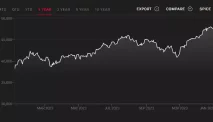Some of the sectors and industries that PIF is developing include defense, aerospace, security, industrial manufacturing, logistics, mobility, digital and media, sports, and culture. PIF also supports the development of mega-projects and economic zones, such as NEOM, Qiddiya, Red Sea, Amaala, and SPARK, which are designed to transform the Saudi landscape and offer world-class experiences and services.
Enabling the Private Sector
This pillar focuses on supporting and empowering the private sector, especially the small and medium enterprises (SMEs), which are vital for the economic diversification and growth of the kingdom. PIF aims to provide access to finance, markets, and talent for the private sector, as well as to foster a conducive and innovative business environment.
Some of the initiatives and programs that PIF is enabling for the private sector include the Saudi Venture Capital Company, which invests in startups and venture capital funds; the PIF Program Lending Platform, which provides loans and guarantees to strategic projects and companies; and the Future Investment Initiative Institute, which promotes thought leadership and collaboration on global issues and trends.
PIF Strategy: Vision Realization Program 2021-2025
In January 2021, PIF launched its VRP 2021-2025, which is the second phase of its strategy, following the successful completion of its VRP 2018-2020. The VRP 2021-2025 outlines the fund’s objectives, initiatives, and targets for the next five years, as well as its contribution to the Saudi economy and society.
The VRP 2021-2025 is based on four strategic themes: funding new human futures, driving environmental and economic sustainability, developing new sectors and creating new job opportunities, and localizing cutting-edge technology and knowledge.
Some of the key objectives and targets of the VRP 2021-2025 include:
- Investing a minimum of USD 40 billion annually in domestic projects and investments
- Contributing USD 320 billion to non-oil GDP cumulatively through its portfolio companies
- Growing assets under management to over USD 1.07 trillion
- Creating 1.8 million direct and indirect jobs by the end of 2025
- Increasing the localization rate of its portfolio companies to 60% by the end of 2025
- Reducing the carbon footprint of its portfolio companies by 60% by the end of 2025
PIF Strategy: Achievements, Challenges, and Opportunities
Since its inception in 1971, PIF has achieved remarkable results and milestones, both domestically and internationally. Some of the fund’s notable achievements include:
- Tripling its assets under management from USD 117 billion in 2016 to USD 400 billion in 2020
- Investing in more than 50 new companies and projects, creating more than 331,000 direct and indirect jobs
- Launching 13 sector development companies, such as SAMI, SDAIA, and STC
- Establishing 10 mega-projects and economic zones, such as NEOM, Qiddiya, and Red Sea
- Acquiring stakes in leading global companies, such as Uber, Tesla, SoftBank, and Reliance
- Hosting the Future Investment Initiative, the premier global platform for dialogue and action on the future of investment
However, PIF also faces significant challenges and risks, both internally and externally. Some of the fund’s main challenges and risks include :
- Balancing its dual role as a strategic and commercial investor, while aligning with the national priorities and interests
- Managing its large and diverse portfolio, while ensuring effective governance, transparency, and accountability
- Adapting to the changing and uncertain global economic and geopolitical environment, while mitigating the impact of volatility, shocks, and crises
- Competing with other sovereign wealth funds and institutional investors, while maintaining its competitive edge and reputation
- Attracting and retaining the best talent, while developing the human capital and capabilities of the Saudi workforce
Despite these challenges and risks, PIF also has tremendous opportunities and potential, both domestically and internationally. Some of the fund’s main opportunities and potential include:
- Leveraging its unique position and influence as the sovereign wealth fund of the largest economy and the most populous country in the Middle East
- Capitalizing on its access to abundant and low-cost capital, as well as its long-term investment horizon and flexibility
- Benefiting from the strong growth and diversification prospects of the Saudi economy, as well as the reforms and initiatives under Saudi Vision 2030
- Exploring new and emerging sectors and markets, such as technology, tourism, entertainment, renewable energy, healthcare, mining, and agriculture
- Building and strengthening its global network and partnerships, as well as its thought leadership and innovation capabilities
Conclusion
PIF is a leading global investment partner that shapes the future of the Saudi economy and accelerates its transformation. PIF has developed a comprehensive strategy that covers three main pillars: maximizing value creation, developing strategic sectors, and enabling the private sector. PIF has also launched its VRP 2021-2025, which outlines the fund’s objectives, initiatives, and targets for the next five years.






